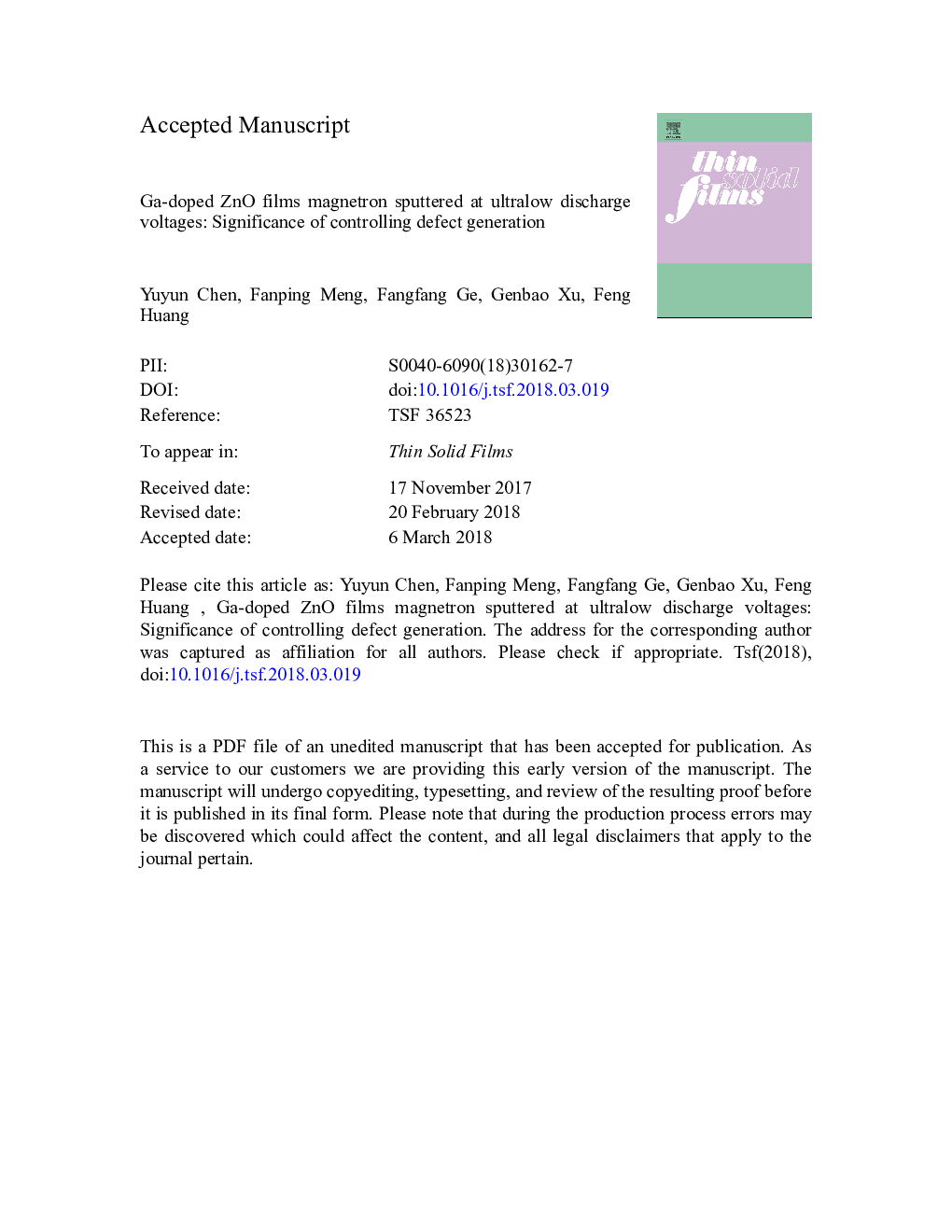| Article ID | Journal | Published Year | Pages | File Type |
|---|---|---|---|---|
| 8032540 | Thin Solid Films | 2018 | 29 Pages |
Abstract
In magnetron sputtered oxide thin films, both the structure and physical properties are affected by bombardment-induced defects and their annihilation. Ga-doped zinc oxide (GZO) films with low Ga content (~1.7â¯at.%) were magnetron sputtered at various discharge voltages (70-220â¯V) and the growth temperatures (130â¯Â°C and 380â¯Â°C). The microstructure was characterized by X-ray Diffractometry, Raman Spectroscopy, and Transmission Electron Microscopy. Meanwhile, the electrical and optical properties were measured by Hall-effect measurement and Spectroscopic Ellipsometry, respectively. We found that reducing the discharge voltage led to higher structural quality and better electrical properties, independent of the growth temperature. The benefit, from using a high temperature (i.e., 380â¯Â°C), of the structural improvement, can only be achieved when the discharge voltage has been decreased to ultralow (i.e., 70â¯V). Our results suggest that for high quality GZO films deposition, controlling the defect generation should be preferable to simply increasing the growth temperature.
Related Topics
Physical Sciences and Engineering
Materials Science
Nanotechnology
Authors
Yuyun Chen, Fanping Meng, Fangfang Ge, Genbao Xu, Feng Huang,
